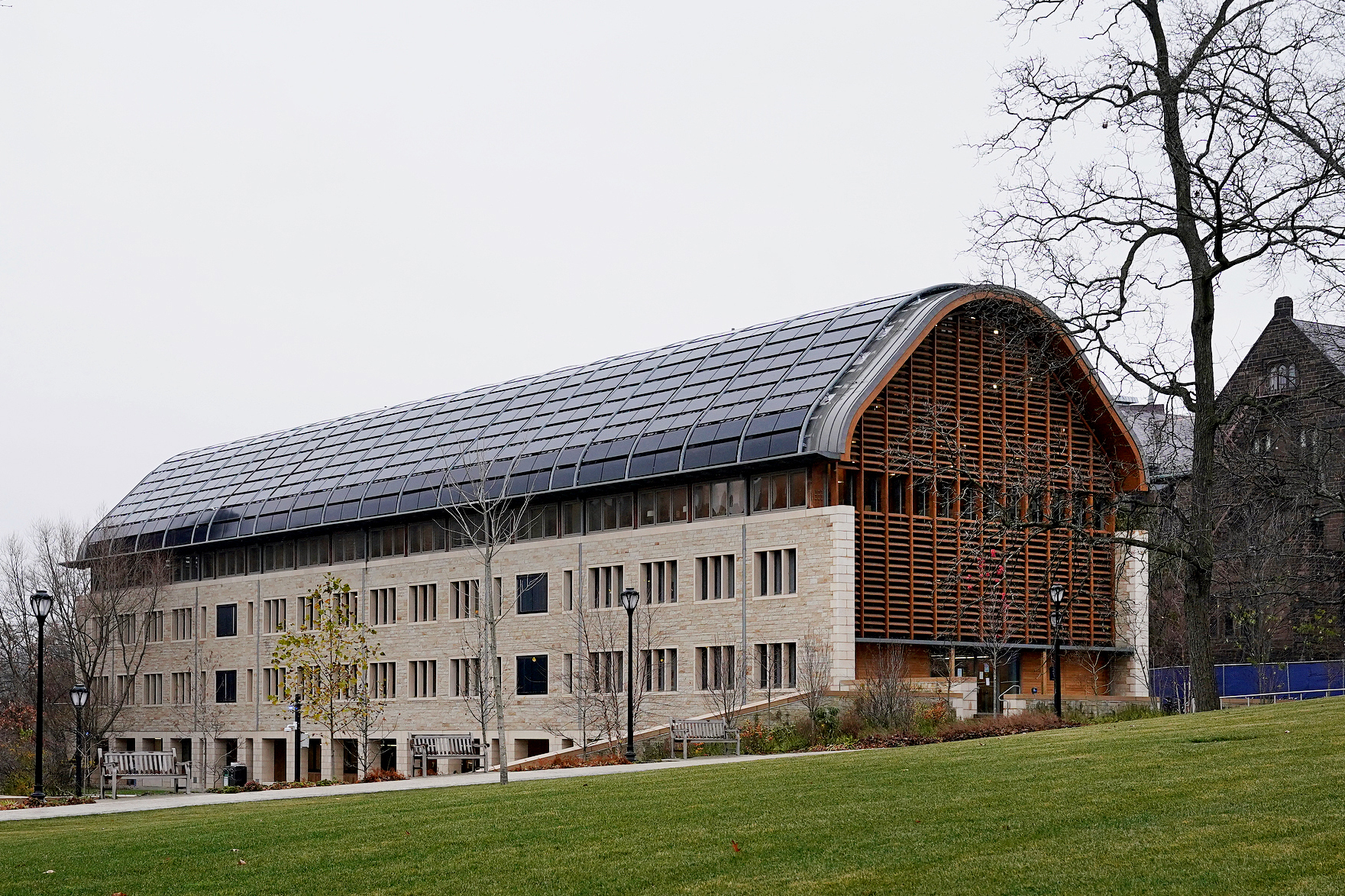Yale study investigates ecological impact of mussels on coastal marshlands
Research in partnership with the Yale Carbon Containment Lab has evaluated the impact of mussels on stemming sea level increases.

Tim Tai, Photography Editor
Some of nature’s fiercest filter-feeders might also be its unlikeliest landscape engineers.
A study published last month by researchers at the Yale Carbon Containment Lab and the University of Florida quantified the ecological impact of ribbed mussels on coastal marsh wetlands. One of the first of its kind, the project found that these mollusks crucially maintain marsh bed levels by depositing sediment into the water.
“Mussels are playing a critical role in helping maintain the stability of these wetlands,” Christine Angelini, professor at the University of Florida and member of the study, told the news.
The research — a yearslong culmination of fieldwork — quantified the impact of mussels on a variety of experimental levels. The team hypothesized that mussel mounds were the greatest source of the sediment deposition in the marsh, finding that when selectively sampled in marshes, mussel mounds drove “two to 10 times more sediment deposition than any other area type,” explained Sinead Crotty, associate director at the Yale Carbon Containment Lab.
Mussels’ abilities to excrete extraordinary amounts of sediment is a side-product of their filter-feeding habits. As mussels sieve through the water, they draw out suspended particles in the water column. According to Crotty, the particles that don’t reach their gut end up mingling with mucus to create “pseudofeces” — dense, nutrient-rich sediment that often settles in the marsh bed and provides habitats for a wide range of aquatic creatures.
The mussels’ large role in sediment deposition was a theme that repeated itself at every ecological scale. The team conducted a battery of other experiments — fluorescently tagging mussel pseudofeces, running mathematical models and even transferring roughly 200,000 mussels by hand from one marsh to the other — finding their hypothesis confirmed time and again.
For Crotty, the mussels’ significance was clear. Not only did the pseudo feces “spread” across the marsh, she explained, but they substantially increased baseline soil levels. The most “surprising result” was the extent of the changes in elevation: the creek to which they transported the thousands of mussels had seen a 0.4-centimeter increase in ground level per year, while the site of removal sank by one centimeter over the same time.
“We found this critical link where the mussels, by filter feeding and then depositing sediments … can really enhance the deposition onto the salt marsh and help them gain sediment at a quicker pace,” said Hallie Fischman, PhD student at the University of Florida.
The ecological importance of these bivalves will only increase as sea levels continue to rise. Wetlands can store up to 1,940 pounds of carbon per acre each year, and yet figure among the most vulnerable ecosystems to flooding. Crotty and Angelini noted that marshes currently comprise about 750,000 acres of the South Atlantic Bight, with the ribbed mussel occupying anywhere from “0.1 to about 10 percent of the landscape.” These “critical interactions” between mussels and their marsh habitats will likely dictate whether “[the marshes] keep their heads above water or drown.”
Angelini also cited the study as one of the first to credit fauna with the ability to shape their environment. Most existing research on coastal wetlands has only investigated the relationship between plants, water flow and sediment accumulation. The experiment’s results add to proof that animals are driving ecosystem responses to changing environmental conditions.
Crotty added that mussel sediment accretion isn’t the only instance of “rapid”, animal-led ecosystem engineering. Marsh crabs, for instance, have been known to migrate into wetland ponds that have been overtaken by floods. By consuming wetland grass and mud, they also “increase [the pond’s] capacity to drain the platform.”
“What we’re seeing is … that more innocuous species that were historically just components of the community are emerging in new roles and helping systems to adapt to climate change,” Crotty said. “We … suggest that folks studying these other ecosystems be aware of this and identify those animals … and incorporate them into … management goals.”
Crotty expects to improve model predictions across future studies. The current model accounts only for the direct effects of sediment accretion, and Crotty looks forward to including their indirect consequences for a more comprehensive understanding.
But for a creature as versatile as the ribbed mussel, their contributions to sediment accretion might still just be the tip of the iceberg. Fischman’s current research seeks to study the role of mussels in nitrogen cycling, in which they pull nitrogenous materials out of the water column and release it as nitrogen gas. Angelini expressed a similar interest in measuring their effect on water quality and profiling the composition of their filtered material.
The Yale Carbon Containment lab was launched in January 2020 under the Yale School of the Environment.







